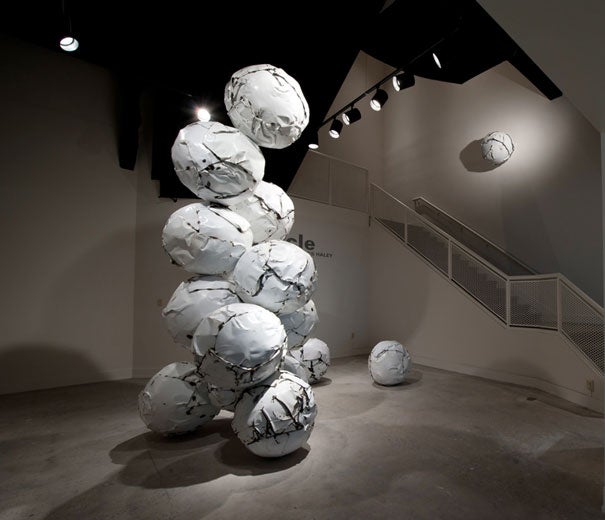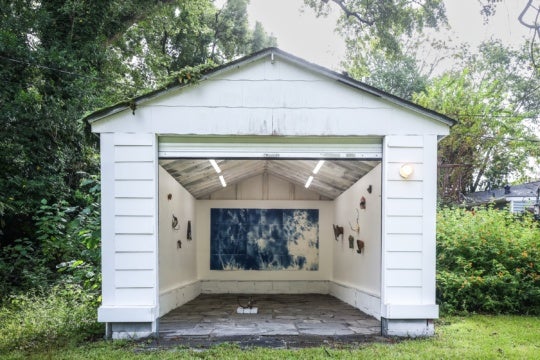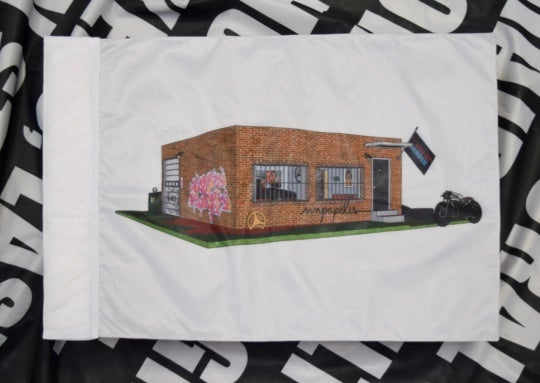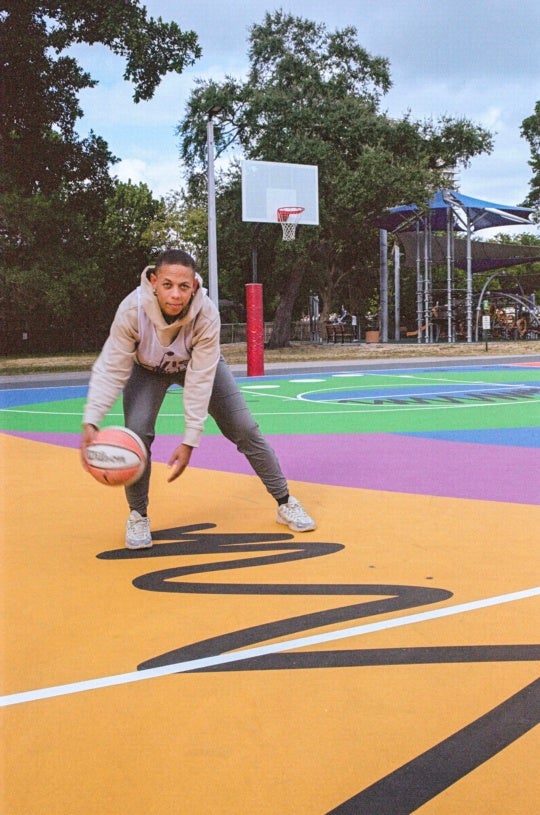
BURNAWAY’s Permanent Residents column highlights permanent installations and artworks at galleries, museums, and art spots around the Southeast. Writing about the Asheville Art Museum, the column takes on a necessarily anxious tone as three site-specific artworks at the museum face a necessarily impermanent future with the downtown institution’s major renovation coming up in 2016. Schedule a visit to see these immersive spaces and perception-bending works before the page turns to the museum’s next chapter.
In a career that spanned five decades, Sol LeWitt played key roles in both the conceptual and Minimalist art movements. During that time, he created more than 1,200 wall drawings with materials evolving from graphite to crayon to colored pencil to, as the artist became inspired by early Florentine fresco painters, intense ink washes. Wall drawings like the one at the Asheville Art Museum can be found in the Kuntshalle in Bern, Switzerland, the San Francisco Museum of Modern Art, the Tate Gallery in London, and in the Whitney Museum of American Art in New York. As with most of his installations, the Asheville drawing was done by a group of volunteers following LeWitt’s written instructions. LeWitt always intended the drawings to be collaborative affairs, and he enjoyed the fact that they were inevitably destroyed after an exhibition.

Sharon Louden‘s Community occupies its own small gallery in the museum. It’s a room-filling installation of reflective aluminum installed with steel screws. The material is cut into a variety of shapes—strips, jagged pieces and flowing curves—and installed in a random, abstract wave of glistening, reflective surfaces that dance in the gallery’s light and come to life with the movements of gallery visitors. The piece recalls funhouse mirrors, disco balls, Warhol’s silver balloons, and the beauty inherent in industrial techniques and materials. While I sneer at museum selfie culture, this piece practically commands visitors to take pictures of their distorted selves. So click away—everybody’s doing it.

Asheville artist Hoss Haley‘s Cycle was one of the highlights of my visit. At first glance, the imposing installation looks like a hastily built snowman, comprising precariously balanced white balls in a museum hallway. The balls are about 4 feet in diameter and from a distance they look like they may be made of wood or foam or paper. The top-heavy design and a stray ball mounted near the ceiling on an opposite wall add to the illusion of weightlessness. In fact, each ball is made of a crushed washing machine. The work makes a satirical statement on the built-in obsolescence of consumer goods while also pointing to the natural life cycle of artificial materials.
Joe Nolan is a critic, columnist, and intermedia artist in Nashville. Find out more about his projects at www.joenolan.com
At the Asheville Art Museum
Related Stories
Reviews
Daily
Trickster
Rustle at Blue Boy, Savannah
Noah Reyes reviews the methods in which the natural world is noticed and harnessed in Rustle at Blue Boy, Savannah.
‘Untitled (Studio View)’ Flag by Antonio Darden – A Burnaway Artist Edition
Burnaway is excited to announce our third Artist Edition 'Untitled (Studio View)', a flag made by Atlanta-based artist Antonio Darden.
On the Speculative World of the Miami VIS: Introducing Najja Moon
For Burnaway's TRICKSTER theme feature and for November’s co-publishing initiative with Oxford American, Isabella Marie Garcia considers parafiction as a tool in the conceptual practice of Najja Moon, where artist and basketball player collide.




